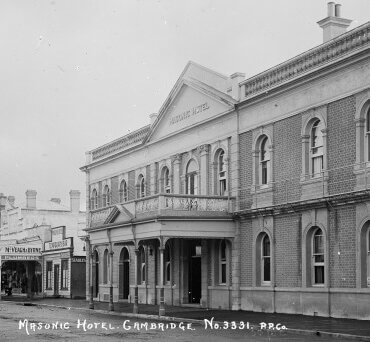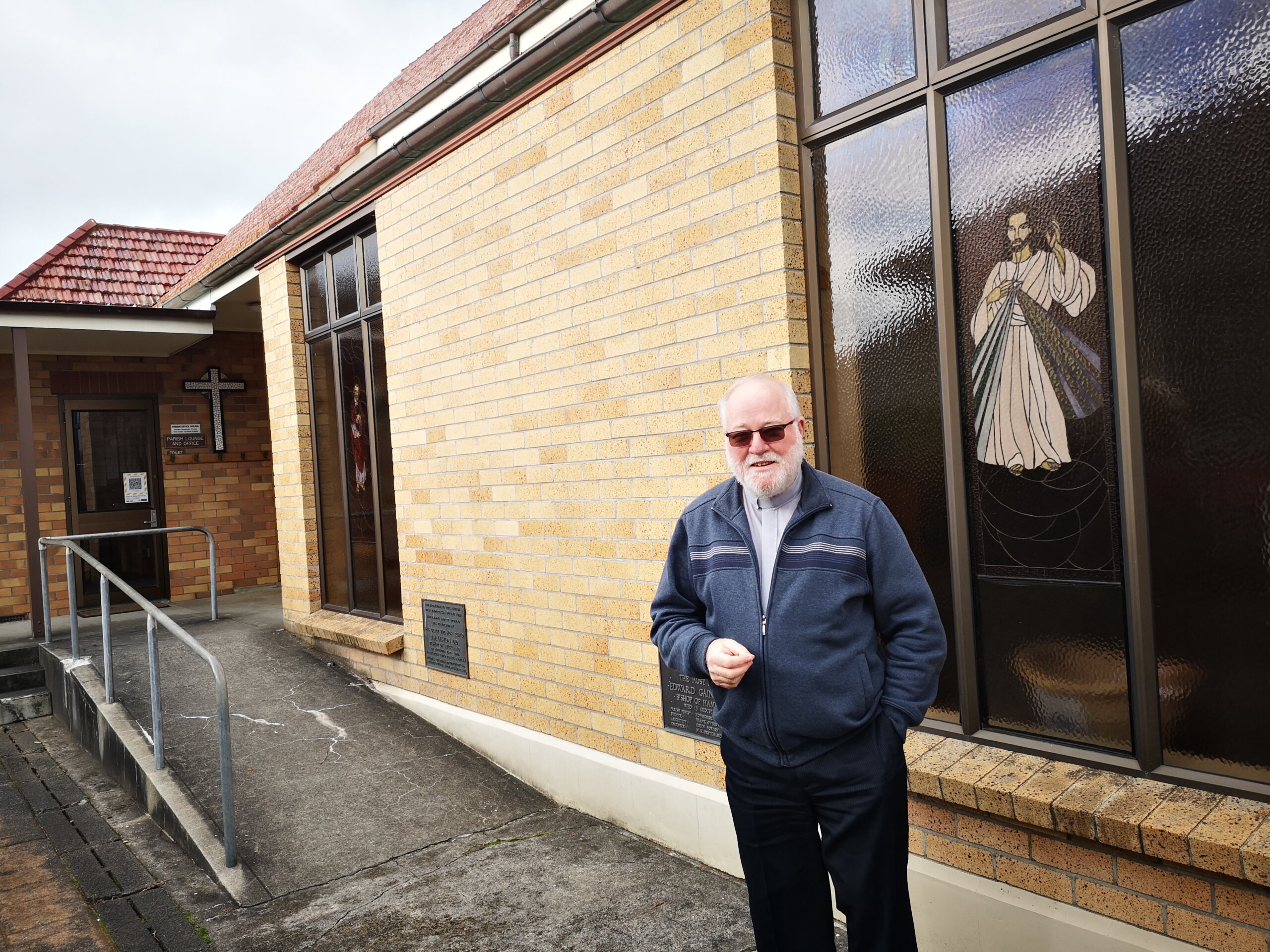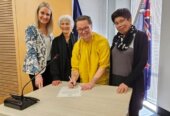
Masonic Hotel circa 1915-1925.
More than 100 buildings now deemed “earthquake-prone” in Waipā and King Country will be reviewed when new legislation is introduced.
Waipā has about 62 buildings on the Earthquake Prone Buildings Register, held by the Ministry of Business, Innovation and Employment, and the King Country region has 40.

Father Leonard Danvers outside St Peter’s Catholic Church in Cambridge when a fundraising campaign was launched to replace the church. Photo: Mary Anne Gill
Ōhaupō Memorial Hall, Regent Theatre Te Awamutu and St Peter’s Catholic Church in Cambridge are on the list, as are the Piopio Senior Citizens Association and Mokauiti Hall.
The government plans to replace the country’s earthquake-prone building assessment system with a risk-based approach. It is expected about 2900 buildings will be removed from the register, saving more than $8.2 billion.
After the Building (Earthquake-prone Buildings) Amendment Act 2016 was introduced, making major changes to the way earthquake-prone buildings were identified and managed under the Building Act, more than 8000 buildings were added the register.

Susan O’Regan
“As a council, we’ve already completed seismic assessments on a small number of our own buildings, like the Cambridge Museum, Ōhaupō Memorial Hall and the Roche Street office and Museum building,” outgoing Waipā mayor Susan O’Regan told The News last week.
“These reforms won’t change our duty and responsibility to address genuine risks, but they should allow for more proportionate, staged solutions that keep people safe without undue compliance costs.”
Unreinforced masonry buildings under three storeys in small and rural towns of less than 10,000 people will no longer require remediation or warning notices.
Owners must still secure the facade before the building can be removed from the earthquake-prone register.
This change recognises that the risk of a facade falling on a pedestrian is simply lower in communities with fewer than 10,000 residents than it is in larger urban centres, because there are fewer people on the streets.
“Priority buildings” definition will also be narrowed to include only those blocking emergency routes and those with unreinforced masonry facades in high pedestrian/vehicle traffic areas.
Hospitals, schools and fire stations will no longer automatically qualify as priority buildings.
There are 41 Cambridge buildings, 17 in Te Awamutu, three in Ōhaupō and one in Kihikihi on the register.
In the King Country, there are 19 buildings on the register in Te Kūiti, 13 in Ōtorohanga, three in Piopio and two in Aria as well as one each in Hangatiki, Kāwhia and Mōkau.
Waitomo District Council has listed buildings in Te Kūiti, Piopio, Aria, Hangatiki, Mōkau but has identified additional buildings that required further assessment prior to being issued an earthquake prone building notice.
They have until the end of 2027 to issue the notices to those building owners, but given the announcement, they have chosen not to issue these until the new legislation is finalised and they have clarity on their obligations.








